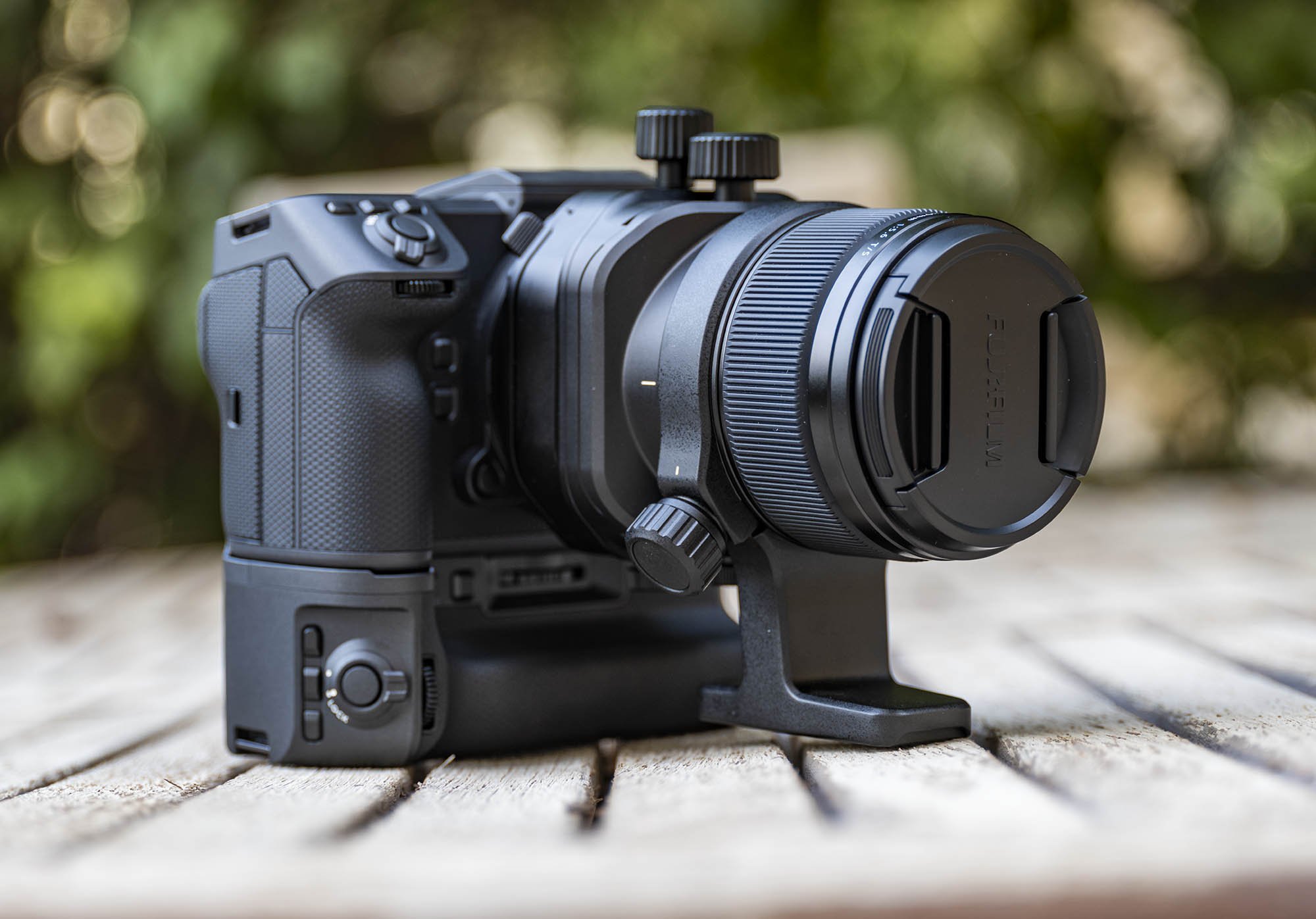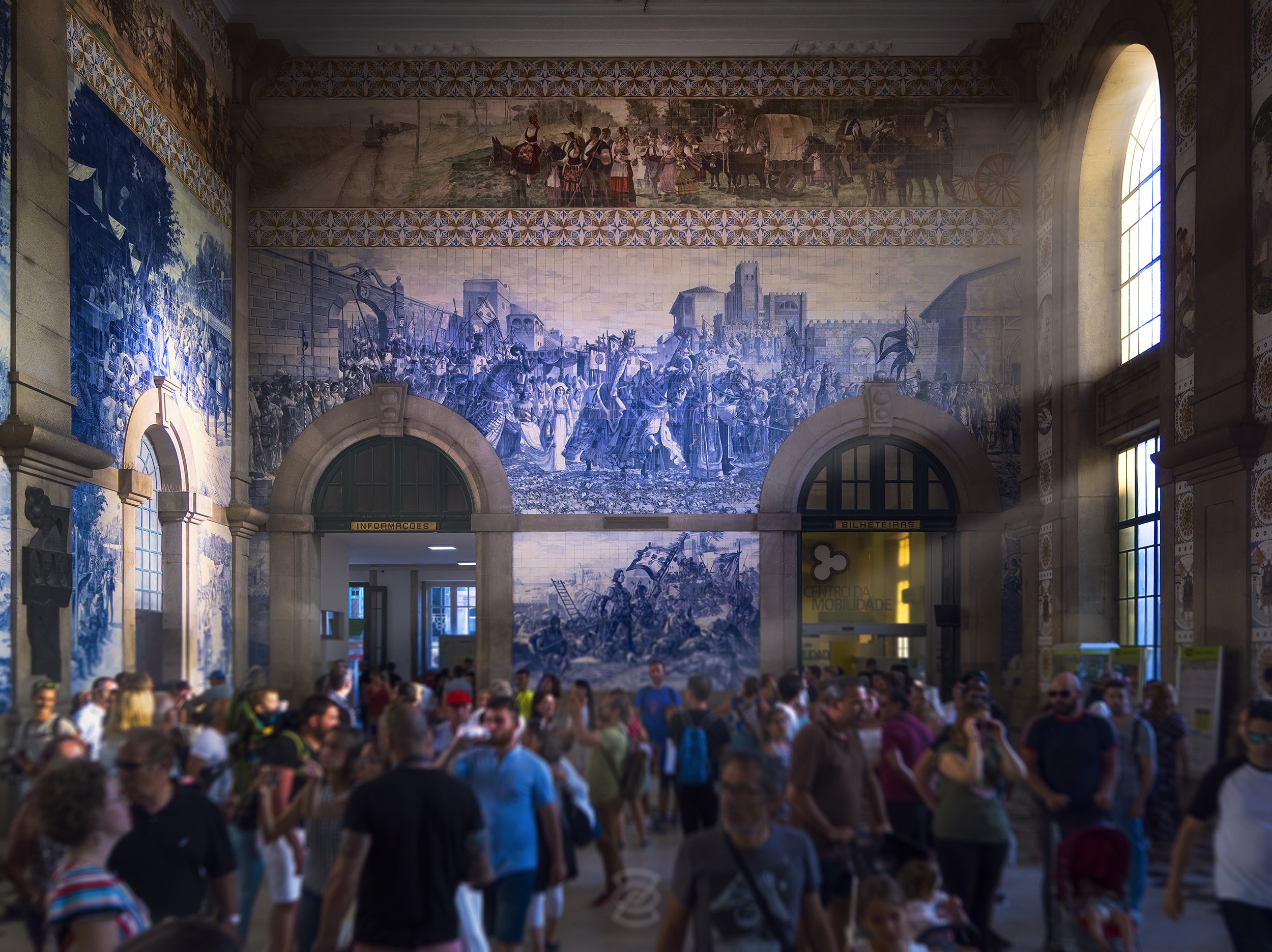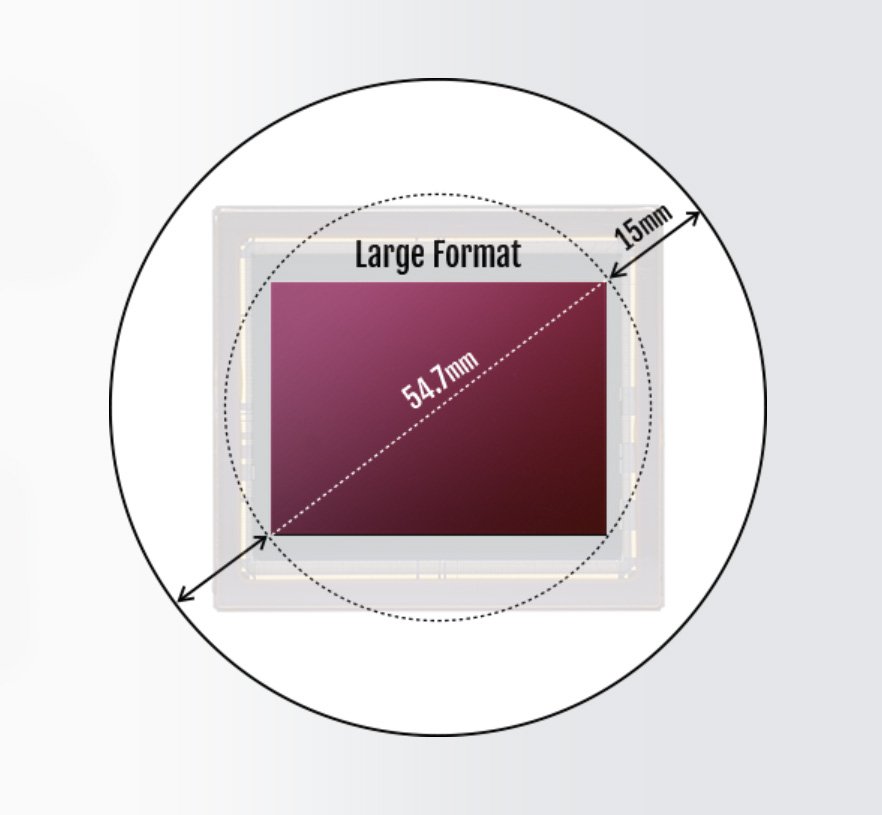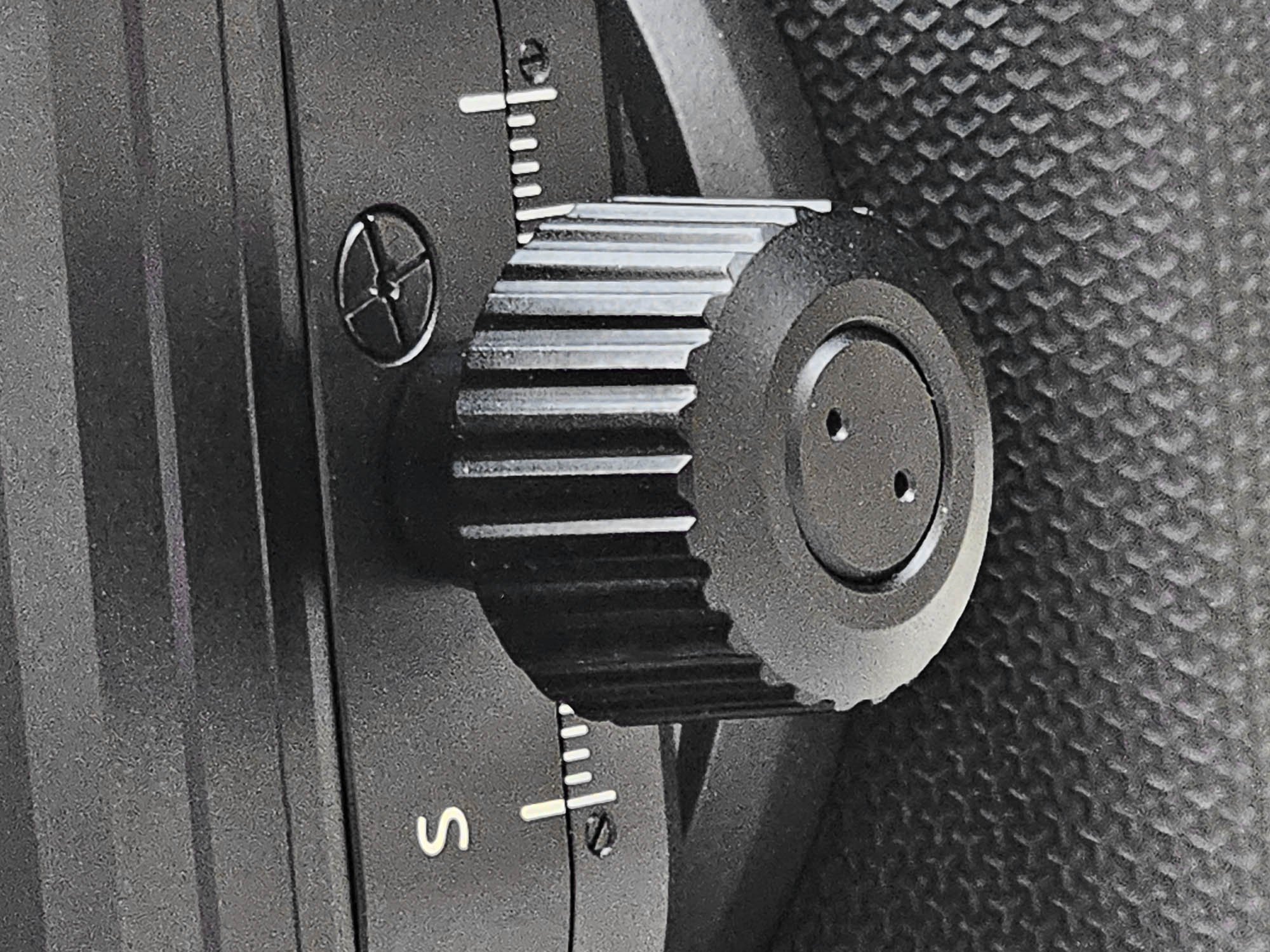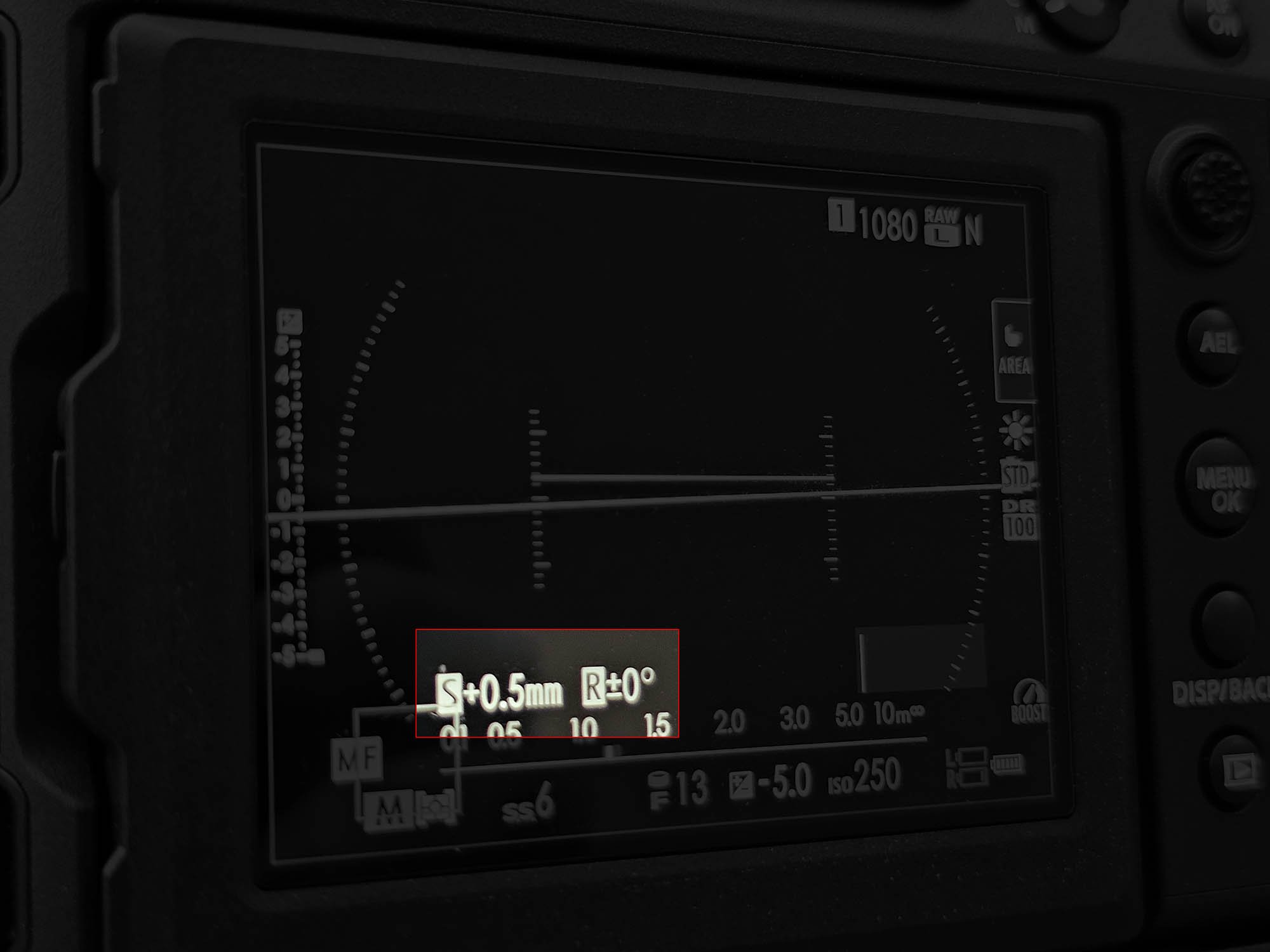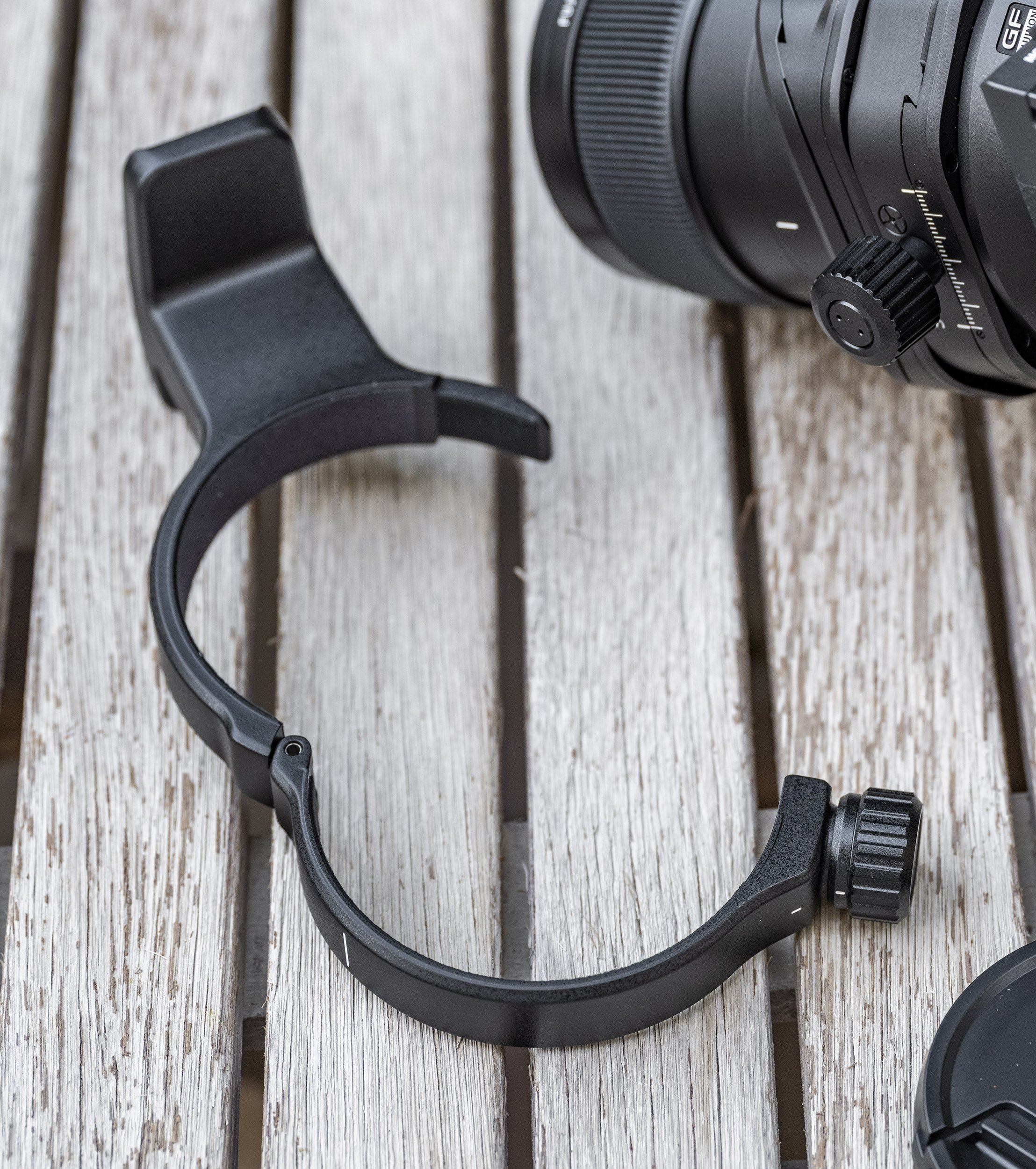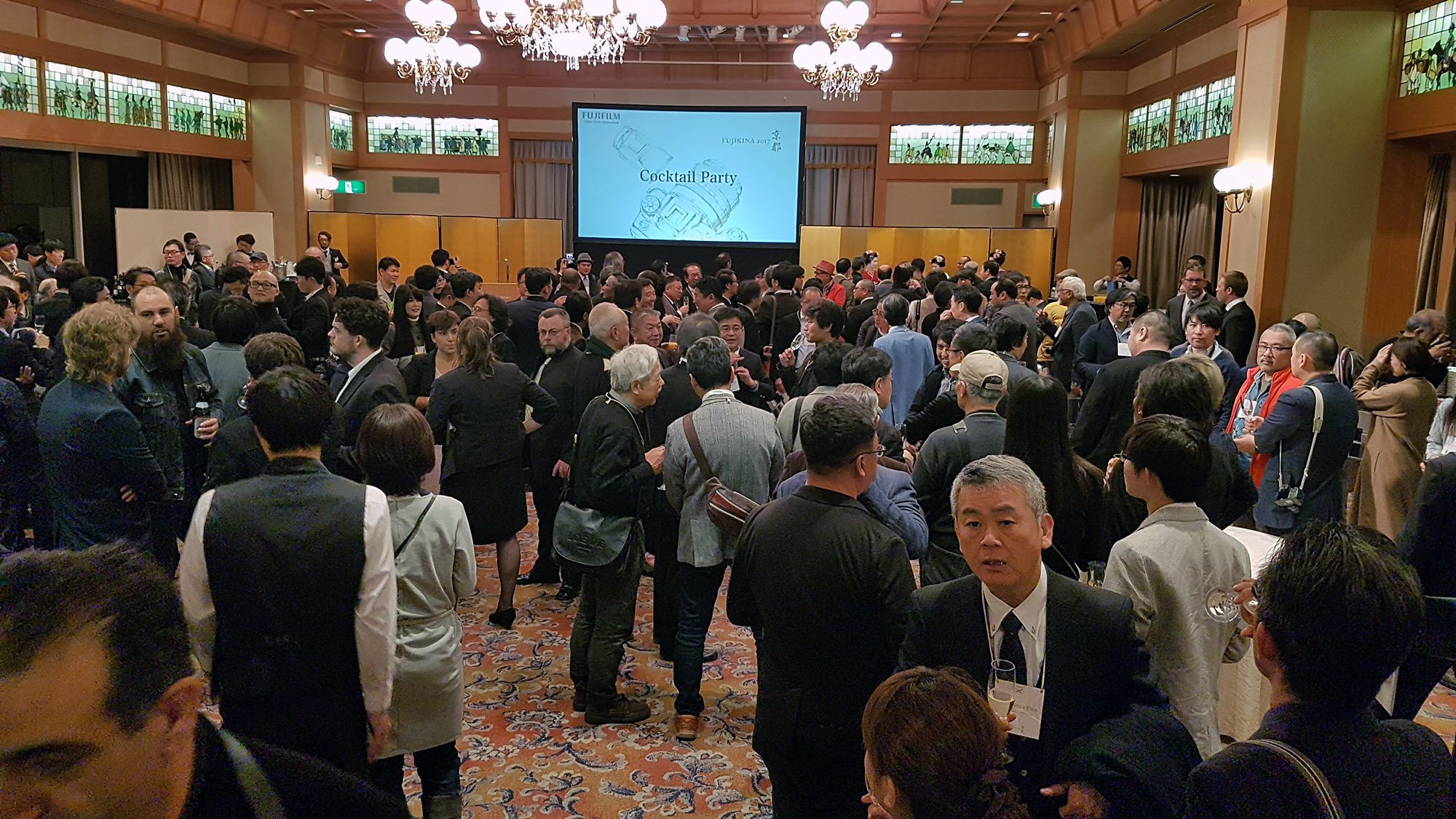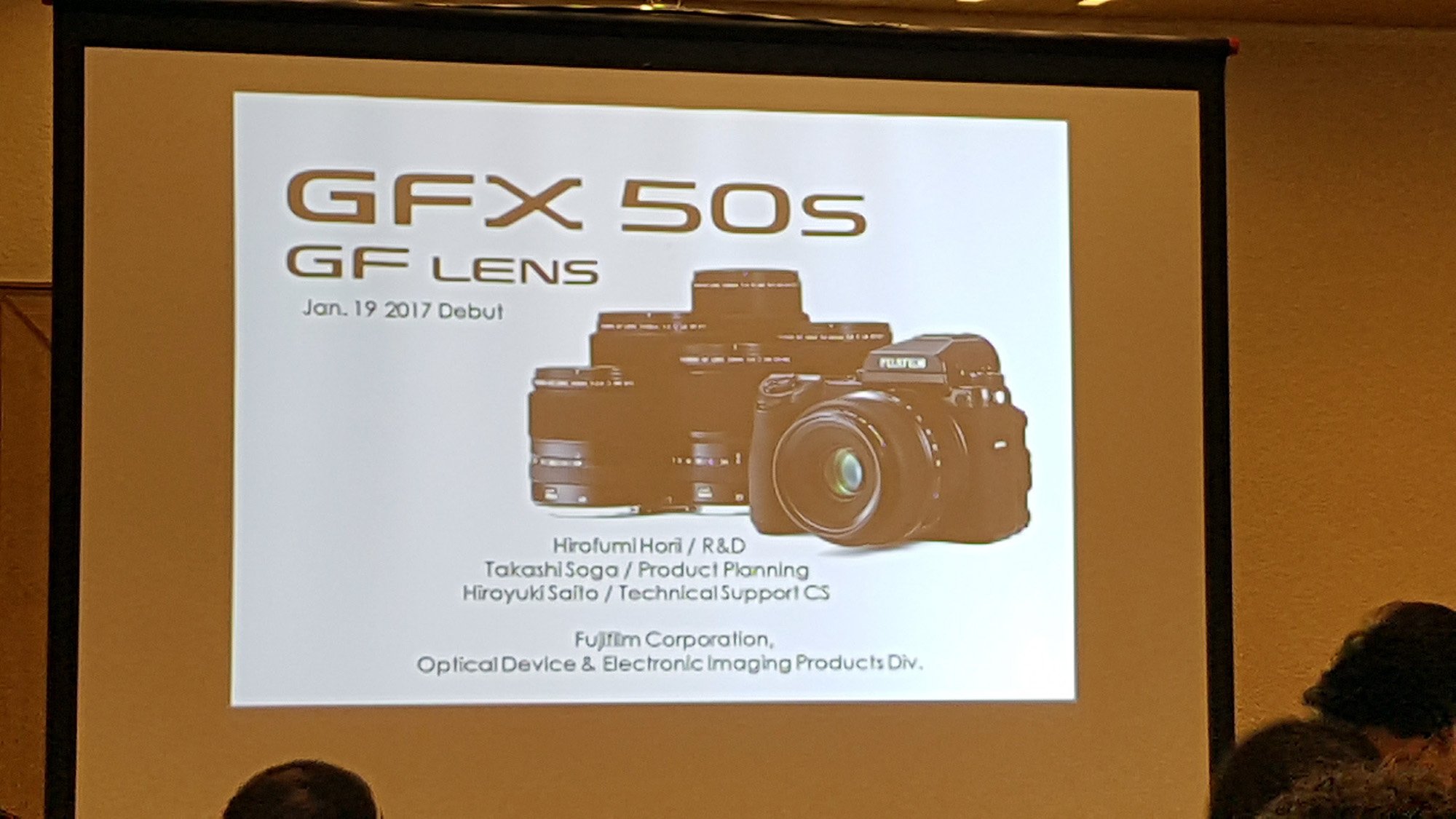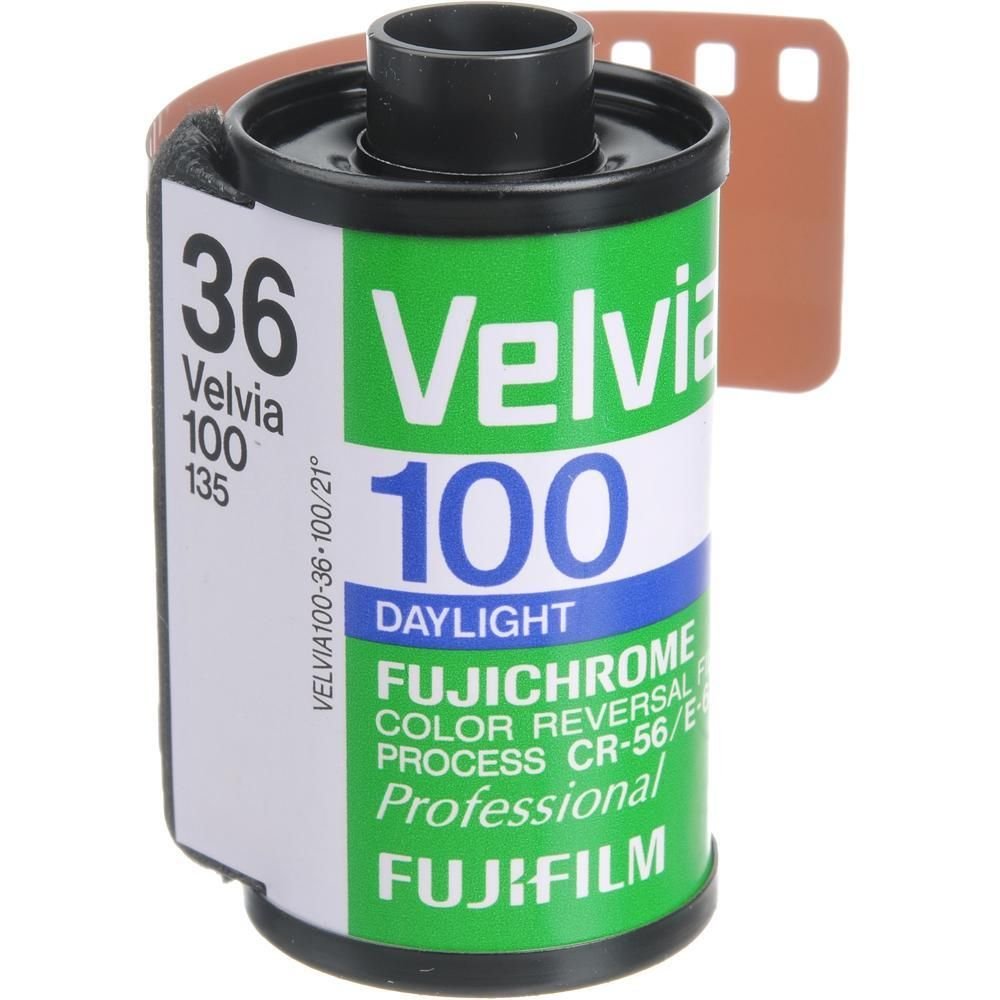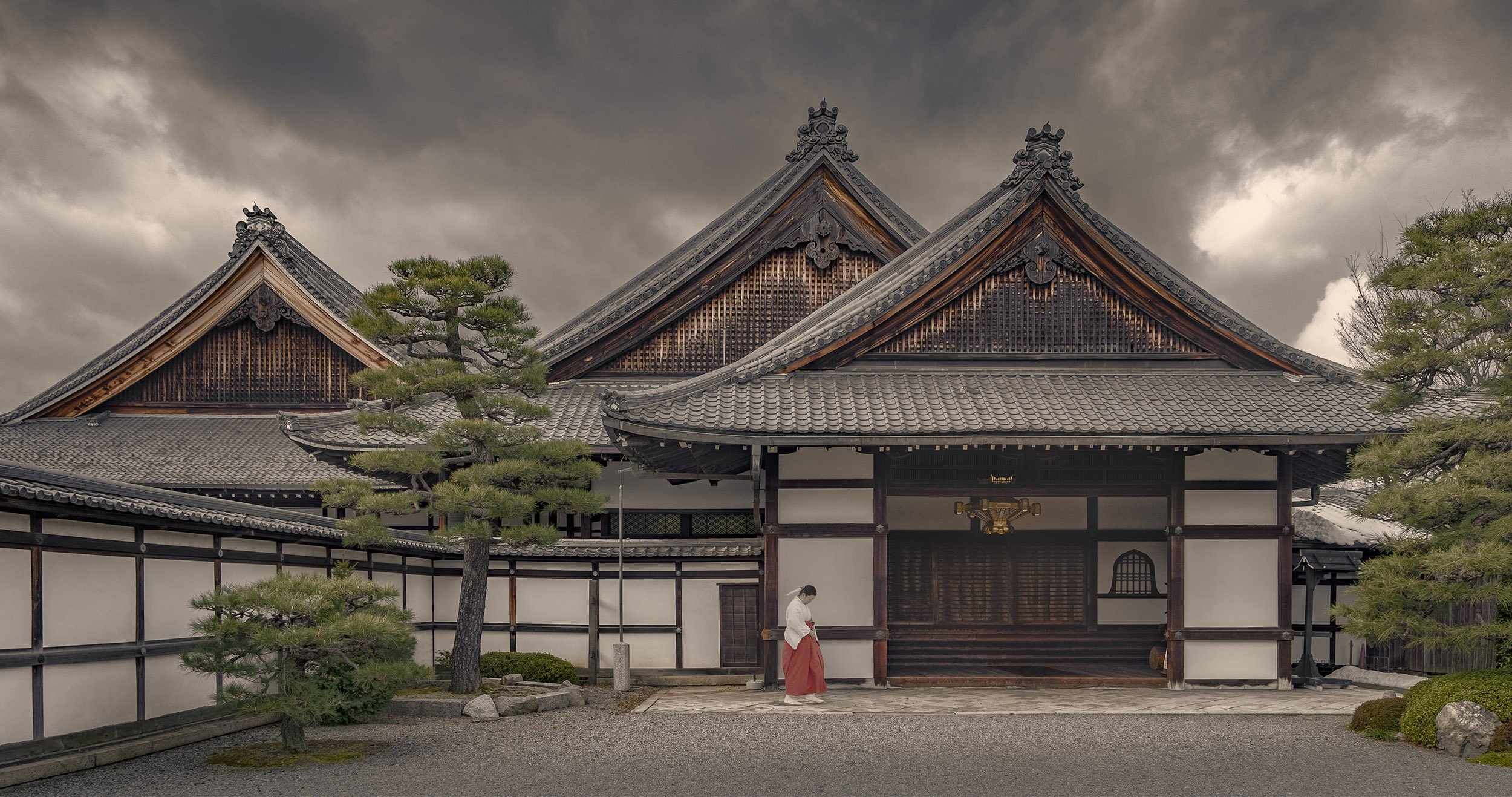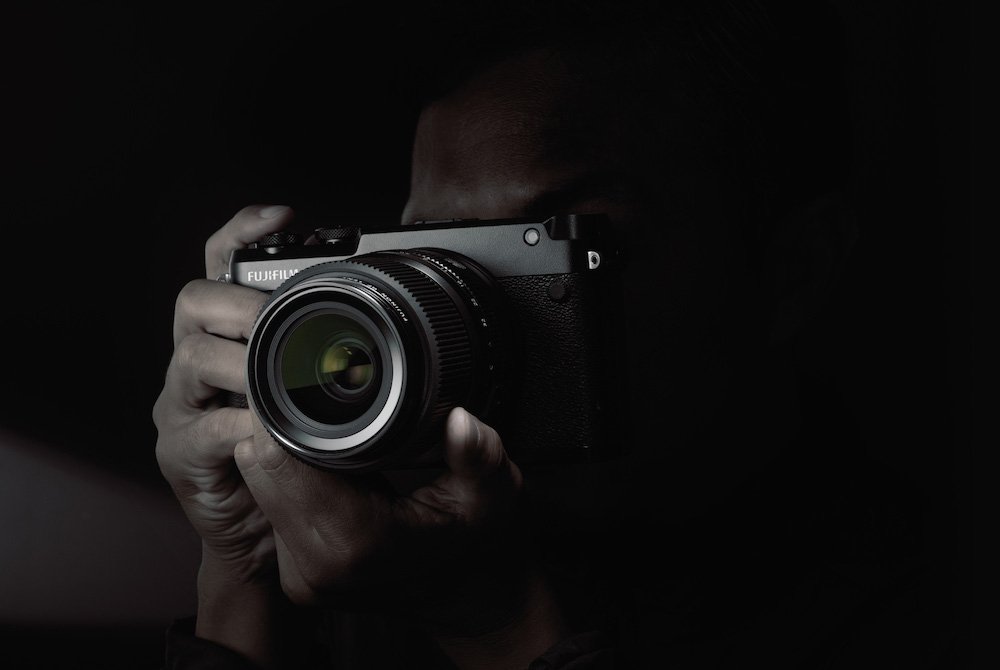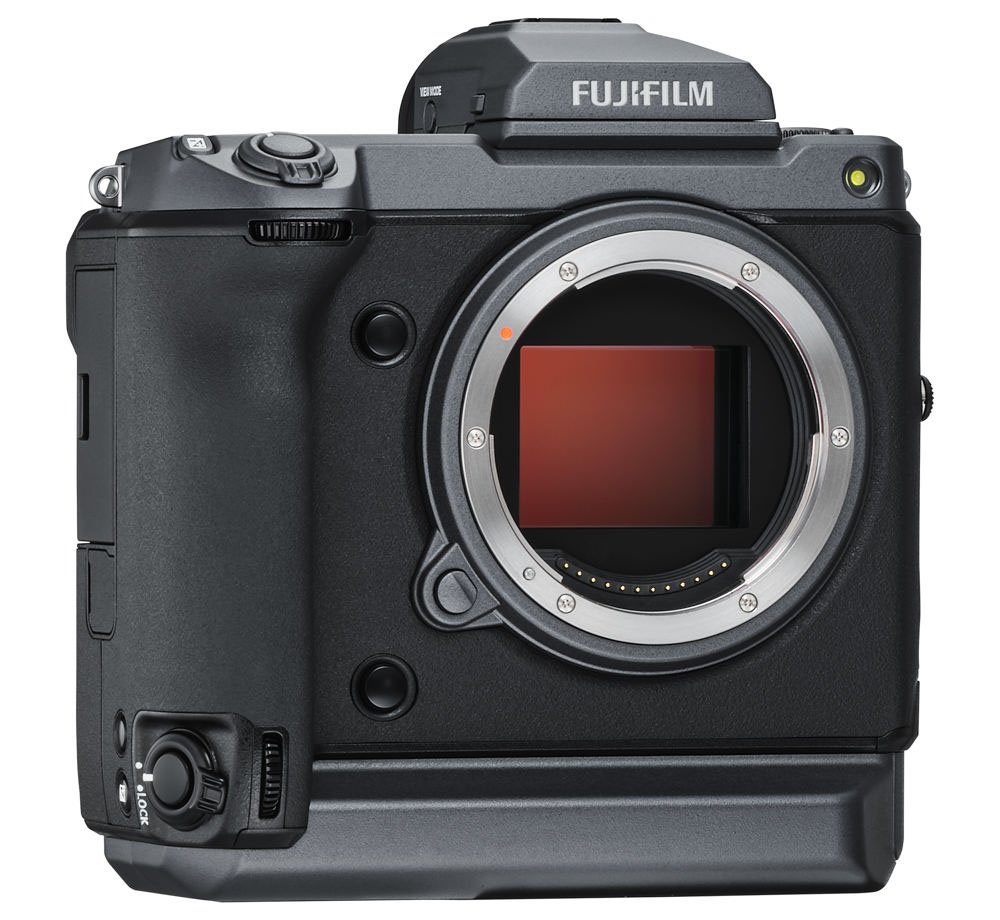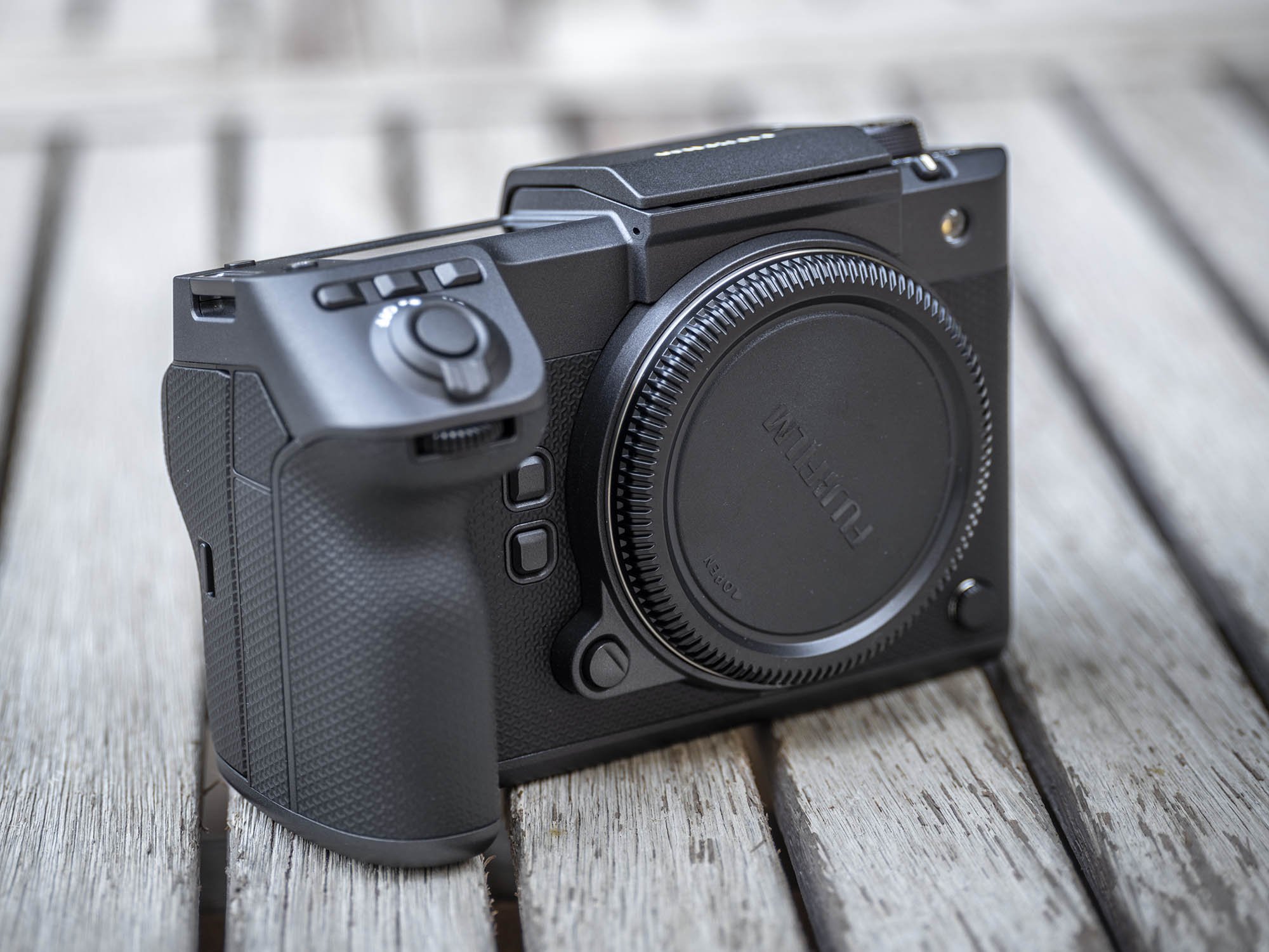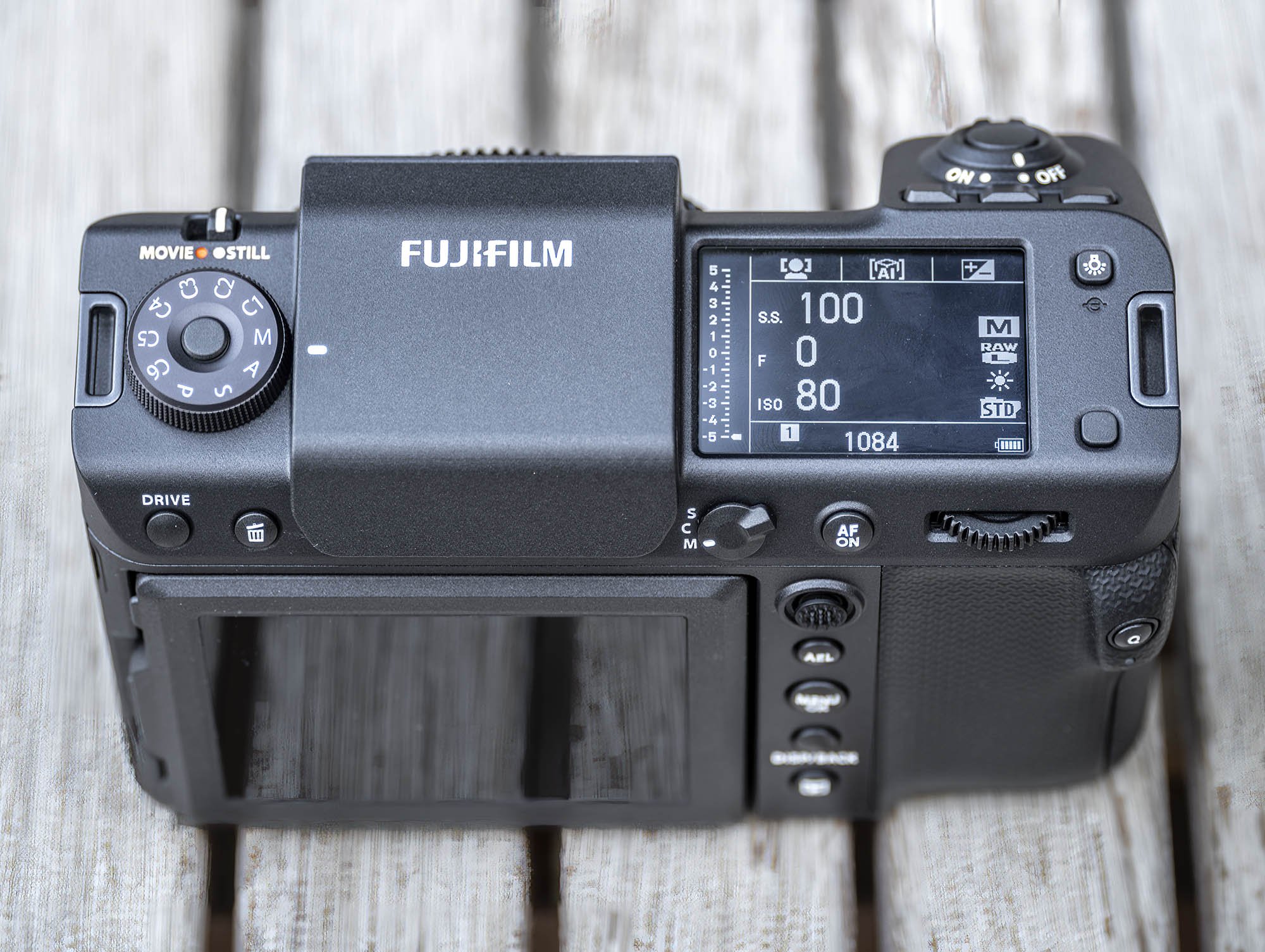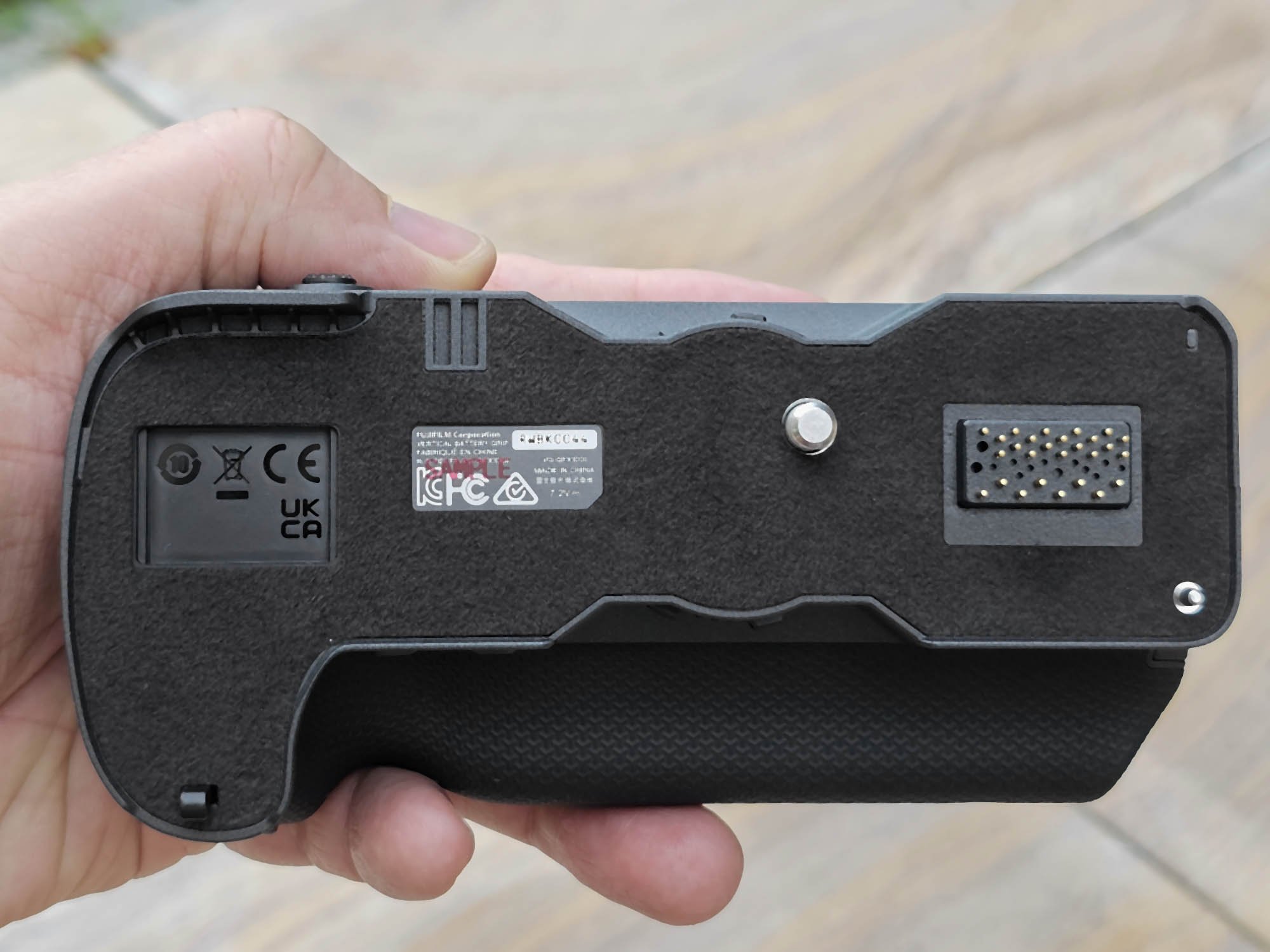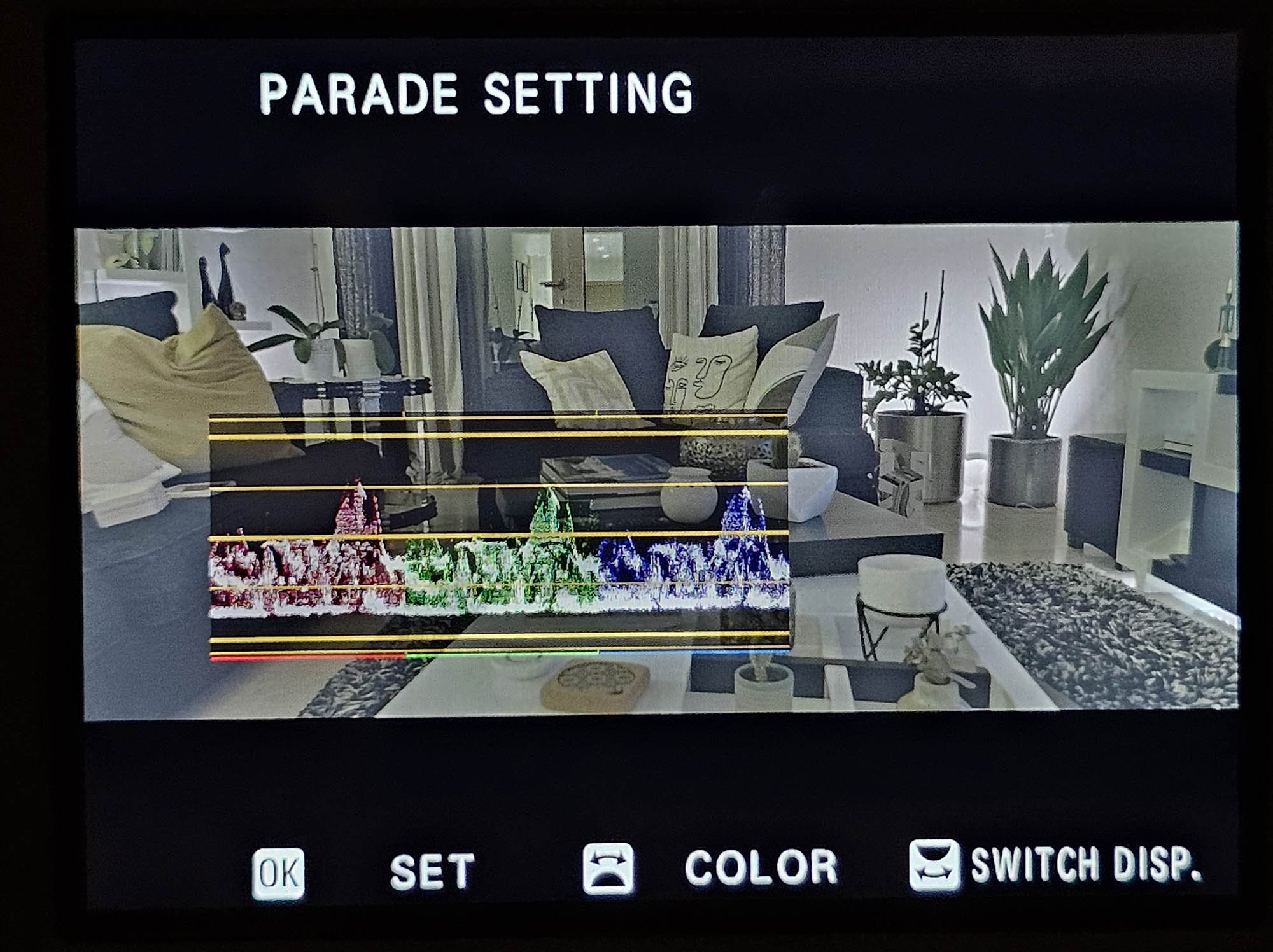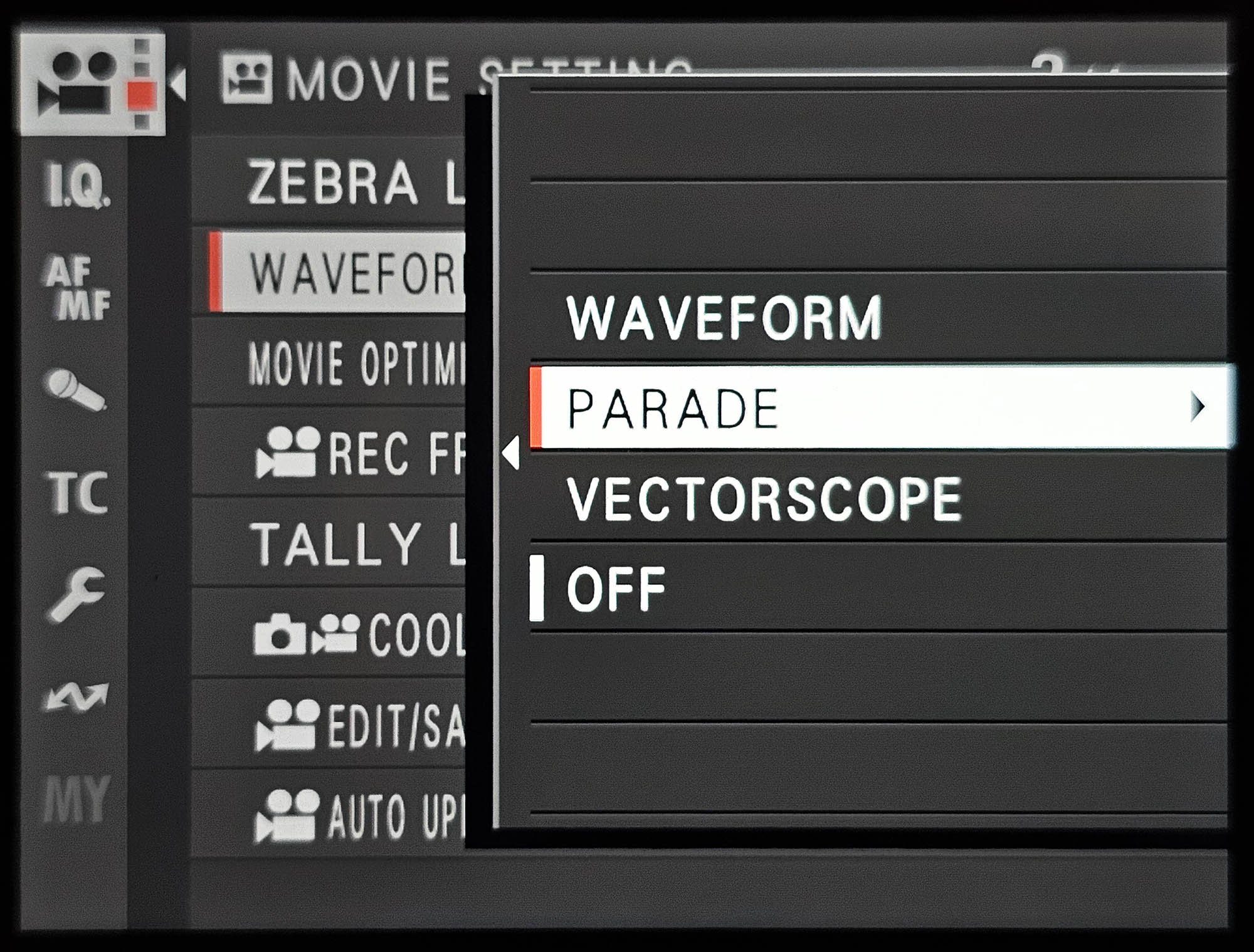Summer gave me the rare chance to shoot for myself—no briefs, no deadlines, just pure photographic joy. I returned to Slovenia, my homeland, armed with a lightweight Fujifilm setup and a desire to rediscover places I never truly knew. One location stood out: Cerknica Lake, a hauntingly beautiful, intermittent body of water that shifts with the seasons. What I found there was more than a landscape—it was a sensory experience of mint-scented air, swans gliding through emerald waters, and the quiet thrill of shooting without a plan.
Read MoreBLOG
Join me on a journey through the world of photography. My blog covers a range of topics including camera gear reviews, behind-the-scenes of commissioned projects, workshop recaps, and general thoughts on a variety of photography subjects. Follow along as I share my passion for the art and craft of photography.
Fujinon GF30mm F5.6 Tilt-Shift Lens
The Ultimate Lens for Creative Photographers
See the world in a new way with this versatile and powerful tilt-shift lens
INTRODUCTION
I've been a photographer for a long time, but it wasn't until I started using tilt-shift lenses that I became obsessed with straight vertical lines. It’s not just a matter of aesthetics. It's about capturing the world as we see it. When we look at a building, it appears straight, regardless of whether we tilt our heads up or down. This is because our brains automatically compensate for the distortion caused by perspective. But cameras and lenses don't have this ability. If a camera is tilted up or down, the vertical lines in the image will converge, resulting in geometric deformation.
On the left: Building photographed with the Fujinon GF20-35 (regular) lens without perspective control. To capture the entire building, I had to tilt the camera upwards, which heavily distorted the building. On the right: The same building after perspective correction in post-production. It took a lot of effort and time to achieve this result, but some sharpness and resolution were lost in the process, and the proportions of the building are questionable.
SHIFTING FUNCTIONALITY
Tilt-shift lenses solve the problem of converging vertical lines by allowing photographers to raise or lower the horizon of the scene while the camera is perfectly leveled and parallel to the ground, without tilting the camera up or down. This is important, because architecture and interior photographers need to portray buildings and cityscapes as realistic as possible. They need to capture the world as we see it with our own eyes, with all its beauty and imperfections. And straight verticals are a key part of that objective.
In real life, straight verticals can also be symbolic. They represent stability and order. They give us a sense of place, scale and perspective. They help us to orient ourselves and to navigate the world around us. Converging lines in a photograph cause us to lose our sense of reality. The result is an unnatural, distorted, unsteady, and unbalanced feeling in the image. In order to capture the world in a way which engages the viewer more deeply, we need to straighten those verticals.
Here are some examples of how straight verticals can be used to create more realistic and engaging photographs:
Architecture: When photographing buildings, straight verticals can help to convey a sense of scale and grandeur. They can also be used to emphasize the symmetry and balance of a building's design.
Landscape: In landscape photography, straight verticals can be used to create a sense of depth and perspective. They can also be used to highlight the natural beauty of the landscape.
Portraits: When photographing people, straight verticals can help to create a sense of dignity and authority. They can also be used to flatter the subject's features.
Various subjects I've photographed over the years. Straight verticals are essential in architectural and interiors photography because they create a sense of order, balance, and realism. Professional photographers use a variety of techniques to achieve straight verticals, while amateurs may not be as aware of their importance or may not have the skills and equipment to achieve them.
Fujifilm GFX users, myself among them, have long been clamoring for native tilt-shift lenses, and their prayers have finally been answered. Tilt-shift lenses are a popular tool for medium format photographers, but until now, Fujifilm GFX users only had the option of using third-party tilt-shift lenses via an adapter. This was far from ideal, as these lenses weren't designed for medium format sensors and didn't deliver the best image quality.
Fujifilm GFX 100 with Canon TS-E 24mm II via Techart EF to GFX adapter. Not an ideal solution, but what choice did I have?
tilting functionality
To understand how the tilt functionality works, one must first understand “The Scheimpflug principle”, which describes the geometric connection between an optical system's focal plane, lens plane, and image plane. Numerous photographic techniques in the real world employ the Scheimpflug principle. It can be utilized, for instance, to:
Control the depth of field: The photographer can alter the depth of field in an image by tilting the lens. For instance, tilting the lens upwards can deepen the field, while tilting it downwards can shallow the field. This is helpful for many other types of photography, such as landscape, architectural, and portraiture.
Create a miniature effect: The photographer can create an illusion of a small world image by tilting the lens. This is accomplished by blurring the image's foreground and/or backdrop while maintaining sharp focus on the object. To provide the impression that the image is a small model, this method is frequently utilized in architectural and landscape photography.
By enabling the photographer to tilt the lens plane by 8.5 degrees, the Fujinon GF30mm T/S lens makes use of the tilt functionality. This gives the photographer control over the image's plane of focus.
Here are some of my photos where I’ve employed the lens’ tilt functionality to create a miniature effect. It’s particulary effective in the cityscapes, photographed from a vantage point.
The release of the Fujifilm GF30mm f/5.6 T/S and GF 110mm f/5.6 tilt-shift lenses is a major milestone for the GFX system. These lenses are specifically designed for the GFX system's 55mm large-format sensor and deliver exceptional image quality. Fujifilm GFX users now have access to native tilt-shift lenses that deliver the highest possible image quality. These lenses will open new creative possibilities for GFX users and help them to capture stunning images that were not possible before.
OPTICAL DESIGN
Fujifilm is one of the world's most experienced and respected lens manufacturers. Designing a tilt-shift lens for medium format cameras is a daunting task, as these lenses require the highest level of optical and mechanical precision. To ensure that the GF 30mm T/S lens would produce consistently superior images, Fujifilm created a complex optical design consisting of 16 lens elements in 11 groups. The lens includes 3 aspherical elements, 2 ED elements, and 1 Super ED element. This sophisticated design eliminates virtually all geometric and chromatic distortions.
The Fujifilm GFX 100 II has a large sensor, measuring a whopping 43.8 x 32.9mm. The image circle produced by the native tilt-shift lenses, the GF 30mm f/5.6 and GF 110mm f/5.6, is 85mm. This means that the lenses can cover the entire sensor of the GFX 100 II, even when tilted or shifted.
Fujifilm GF30mm T/S: Larger and Heavier, But Worth It
The Fujifilm GF30mm T/S lens has a large image circle to cover the medium format sensor of the Fujifilm GFX cameras. This results in a larger and heavier lens than the Canon TS-E 24mm II lens, which is designed for full-frame cameras. However, the Fujifilm GF30mm T/S lens is still relatively lightweight for a tilt-shift lens, and its excellent image quality is worth the extra weight.
Canon TSE-24 mm II on the left and right (786 grams). Fujinon GF30mm T/S in the middle (1340 grams)
WEATHER SEALING
There is no weather swing unfortunately, which is not surprising given the fact that these lenses have lots of mechanical articulation.
build quality
The GF 30mm f/5.6 tilt-shift lens uses CNC machined components from a single block of aluminium to ensure precision and accuracy. This is particularly important for tilt-shift lenses because of mechanical articulation involving precise rotation and sliding of individual parts. The lens barrel must obviously be perfectly round and concentric to produce high-quality images. No play is allowed between each component and tolerance must be kept to an absolute minimum for all optical elements to stay within ideal distances and relationships. The CNC machining process takes several hours to complete for each lens barrel, and this is why you can’t expect this lens to be produced in big quantities. It’s an exotic, niche product.
Oozing of high-quality workmanship and a long history of Japanese precision
IMAGE QUALITY
None of the above matters unless the lens produces sharp and distortion-free images. So I’ll get straight to the point; GF30mm F5.6 T/S is a spectacular lens and the images that come out of it, are pure marvel. You can stop reading here, and pre-order, or buy the lens. You won’t regret it.
From my tests, the photos do not exhibit any (visible) vignette, chromatic aberration, corner blurring or smudging, even at maximum shift, which is +/- 15mm at each extreme. Images are clinically sharp and free of any distortion. I opened the massive 16-bit, 200MB RAW files with the latest version of Photoshop with no issues. ACR module removed all optical flaws and imperfections on the fly. But how? Every Canon or Nikon T-S lens owner knows that you can’t use the RAW converter to automatically fix optical distortions. To answer why this is so hard to achieve, we must know the following first: Lightroom -can- fix optical imperfections and distortions from regular lenses because it has a database of lens profiles. These lens profiles contain information about the specific optical characteristics of each lens, including the types of distortion that it produces. Lightroom uses this information to automatically correct the image for distortion when you import it into the program.
To assess the quality of a lens, check the sharpness in the corners, not just in the center. This is especially important with tilt-shift lenses, as images taken in a fully shifted position can exhibit corner softness, exaggerated chromatic aberration, vignetting, and excessive stretching. The GF30mm T/S is the sharpest tilt-shift lens I have ever tested. Even in the most shifted parts of the image, there is absolutely no sign of image quality degradation. Textures are crisply detailed, edges are razor sharp, and I have literally nothing to complain about. The images look computer-generated, they are so flawless.
Left side: The full picture taken with maximum vertical shift (15mm upwards). 3 red squares indicate the 100% crops on the right side.
However, Lightroom does not have lens profiles for tilt-shift lenses. This is because tilt-shift lenses are more complex than regular lenses, and their optical characteristics can vary depending on how they are tilted and shifted. This movement can change the optical characteristics of the lens, which can make it difficult to create accurate lens profiles. As a result, Lightroom cannot automatically correct tilt-shift lens distortion. Despite these challenges, there are some applications that can be used to correct tilt-shift lens distortion. These programs typically use a combination of manual and automatic tools to correct the distortion. But they aren’t perfect, and it will take some experimentation to get satisfactory results.
GF30mm T/S lens has built-in digital sensor measuring the amount of lens rotation and shift which is displayed on the LCD. I loved this feature - it’s totally unique!
But the GF30mm T/S lens is special with unique technology! It tracks and records the shift and rotation data by using a series of sensors inside the lens. The lens always knows where the center of the image circle is when a picture is taken. The data is then transmitted to the camera body, where it is stored in the RAW image file. When you import a RAW image file into a program like Lightroom, the program reads the shift and rotation data to automatically correct image distortion. This is done by using the information in the lens profile to create a transformation matrix that is applied to the image. The transformation matrix corrects the distortion caused by the tilt and shift of the lens. It’s highly effective too. The images captured with GF30mm T/S are, simply put, flawless.
I was also impressed with bokeh this lens produces. It’s not something I was expecting or hoping from such a technical lens, but when I saw how perfectly round and smooth the defocused sparkles of the chandelier at the Sheikh Zayed Grand Mosque looked like, I was utterly charmed. I will consider shooting at widest apertures with the subject close to the lens, just so I can appreciate the soft, defocused background.
Sparkly, smooth, perfectly round looking bokeh surprised me
Working with the Fujinon GF30MM T/S lens
What can I say? Superbly designed lens, put together by the expert Japanese craftsmen and craftswomen using only the finest materials can’t handle any other way but extremely well.
The focus ring is very wide and rubberized, like on any other GF lens. It has a dampened, oily feel to it. Finding perfect focus requires just the right amount of force. Tilt and Shift dials are large and very comfortable as well. They look big enough to comfortably manipulate with thick winter gloves. Shifting and tilting the lens feels smooth and confident. There’s absolutely no play between the lens parts, which is something I’ve experienced and hated with other brands. The lens is hefty, extremely solid and made to last you decades if you will care for it properly. You won’t be upgrading it anytime soon.
One of the excellent features of this lens is dual rotation capability. You can rotate the lens before the shifting, and after the shifting mechanism. Why is this great? For example, dual rotation allows you to tilt the lens horizontally, while the shifting works vertically. It greatly expands creative possibilities of this amazing lens.
The GF30mm T/S comes supplied with a lens collar made of solid aluminium. Once attached, it lets you rotate, shift or tilt the lens which stays locked in place. It is the camera which moves instead. This is great feature if you want to avoid any parallax issues when you’re shooting shifted panoramas. The second scenario where lens collar is awesome is when you change from horizontal to vertical layout and want to maintain precisely fixed central axis.
I know what you’re thinking but no, those aren’t the handcuffs
What I didn't like about the lens collar was its narrow dovetail which has a 1/4-inch and ¾-inch tripod mounts. I fixed a small Arca-Swiss compatible plate beneath it, held by a single 1/4-inch screw. This would normally be sufficient support, but this lens collar needs to carry the weight of the lens (1340 grams), camera (1688 grams with battery grip), EVF and tilt adapter, and filters, for a total of about 3.3 kilograms. That's too much of a load for a small Arca-Swiss plate to confidently hold. I’m hoping to see much better designed lens collars with an integrated Arca-Swiss dovetail from brands like RRS and others.
The front element of the lens is slightly protruding, which surprised me. Fujifilm includes an adapter ring that screws onto the front thread to accommodate a lens cap. The lens also comes with a large metal lens hood that must be screwed onto the lens after removing the lens cap adapter ring. This is a bit odd. The lens accepts 105mm filters which fit onto the lens hood. I was disappointed by this filter size. as I already have several sets of 82mm filters and 100x100mm square filters. I'll need to purchase some new ones, but this amazing lens is worth the inconvenience.
closing thoughts
The Fujifilm GF 30mm f/5.6 tilt-shift lens is an excellent addition to the GFX system. It is well-built, and delivers exceptional image quality. The tilt-shift mechanism is smooth and precise, and it allows for a great deal of creative control over your images.
This lens is very versatile. I’m certain that this lens will make it onto the wish list of every GFX user who shoots architecture, interiors, cityscapes, portraits, and product photos and needs precise control over perspective and depth of field. It is a bit expensive, but the image quality and versatility make it worth the investment. The lens is relatively compact, especially for a medium-format tilt-shift lens. The images it outputs are the sharpest I’ve ever seen, on any GFX lens. Bokeh is surprisingly soft, pleasant, and dreamy.
One of the most important features of the Fujifilm GF30mm T/S lens is its ability to show you the final composition in the viewfinder (or LCD display) while you are shooting. This is a huge advantage for architectural photographers, as it allows them to get the perfect shot every time, without having to spend time fixing it in post-processing.
Tilt-shift lenses give photographers an entirely different experience of taking pictures. They allow you to see how the final image will look before you take the shot, so there are no surprises later. This is especially important for architectural and interior photography, where precision and accuracy are essential.
With the GF30mm T/S lens, architectural photographers can be confident that they are getting the perfect shot every time. They can see how the image will look with the tilt and shift adjustments applied, and they can make adjustments as needed before they take the shot. This saves time and ensures that they get the perfect image, right out of the camera.
If you are a serious architectural or landscape photographer, the Fujinon GF30mm F5.6 Tilt-Shift Lens is simply a must-have lens. It is a powerful tool that can help you to create stunning images while being in control of every aspect of your subject.
IMAGE GALLERY:
Location: Sheikh Zayed Grand Mosque in Abu Dhabi, United Arab Emirates
Date: 15 September 2023
Equipment:
Fujifilm GFX 100II (demo sample)
Fujinon GF30mmF5.6 T/S lens (demo sample)
KPS T5 Geared Ballhead
Really Right Stuff panoramic panning head
Gitzo GT5541LS Tripod
All images were taken in 16-bit Adobe RGB space in RAW mode and importied into in Photoshop 2023 for final editing.
Thank you for taking the time to read my review of the Fujinon GF30mm T/S lens. Writing reviews can be time-consuming and effort-intensive, so I appreciate your support.
If you found my review helpful and are considering purchasing this wonderful lens, I would be grateful if you would consider using my affiliate link. When you click on an affiliate link and make a purchase, I earn a small commission. This helps me to continue creating helpful reviews and content for my readers.
Here is my affiliate link for Fujinon GF30mm T/S lens https://adorama.rfvk.net/g1Jv1r
Thank you again for your support!
Sincerely, Beno Saradzic
P.S. If you have any questions about Fujinon GF30mm T/S lens, please feel free to leave a comment below or contact me directly. I am always happy to help!
FUJIFILM GFX 100II
THE BEST Medium Format Camera Just GOT BETTER
In 2017, Fujifilm shattered the mold for medium format cameras. 6 years later, they've forged a new path.
HOW MY FUJIFILM JOURNEY STARTED
In February 2017, Fujifilm invited me to Kyoto, Japan, for the launch of the revolutionary GFX line of medium format cameras. This was a major event that changed the landscape of photography. That same month, I transitioned from Canon's Ambassador Program to Fujifilm's. This was a big decision, as I had been heavily invested in Canon gear for over a decade. But I had a good feeling about the team at Fujifilm Middle East in Dubai, and they were very persuasive. So, I took a leap of faith.
Kyoto, Japan, 2017. The launch of the GFX Camera line.
I had no prior experience with Fujifilm cameras, except for their 35mm film rolls, which I loved using in the 90s. I was a big fan of Velvia and Reala Superia 100, but that was the extent of my experience with Fujifilm products. I wasn't sure if I could integrate a GFX camera into my workflow, given my reliance on Canon bodies, lenses, and accessories.
But back to February 2017 in Kyoto. Fujifilm launched the first GFX camera, the surprisingly small and retro-looking GFX 50s. It was no bigger or heavier than my Canon 5D Mark III without the battery grip, and it felt and handled just like any professional DSLR of the time. But one glance at its sensor, which dwarfed the one inside my Canon camera, made me realize that the GFX was something special. Fujifilm also launched a brand-new lens mount, the GF, and the first lens in their lineup was the GF32-64mm, which was light, compact, and very portable. For a medium format camera (as Fujifilm prefers to call it), this was unheard of. Fujifilm had started a revolution.
Fujifilm GFX50s (2017). The camera which changed the course of digital medium format photography.
fUJIFILM GFX 50s
I grabbed a demo camera and took a few hundred shots of Kyoto's stunning sights. This historic city is the perfect testing ground for cameras, with its deep orange torii gates, crimson red, brown, and green castles, golden temples, vibrant green pines, pale blue lakes, and snow-covered branches. It was the ideal scenario to showcase Fujifilm's color science, sensor's dynamic range, lens sharpness, and resolving power.
At first, I struggled to handle the camera. The dials and buttons were new to me, as were the menus. I had developed muscle memory for Canon cameras and could use them blindfolded, which is normal after 10 years of use. But luckily, GFX cameras can be fully customized to feel and act like any camera brand or model. I quickly set the front and rear dials to act like the dials on the Canon 5D, with the front dial for shutter speed and the rear dial for aperture. I also assigned the ISO setting button to one of the many available function buttons. As soon as I made these changes, I felt immediately at home.
With no RAW file converter available at the time, I could only shoot in JPEG mode. But I processed my photos with the built-in film simulation, selecting Velvia, one of Fujifilm's greatest slide films, known for its punchy blues, vivid greens, and intense contrast.
At the end of a wonderful day in Kyoto, after dinner with friends, I headed back to my hotel. Impatiently, I copied the photos to my laptop and opened them one by one. I gasped.
These unedited, Velvia-simulated photos glowed with a warmth and radiance I hadn't experienced since the days of slide film projected on a darkroom wall. It wasn't just the higher resolution or sharpness I admired. Yes, the GFX 50s had total command of the scenes I was photographing, with no part of an image under- or overexposed and every detail beautifully rendered, exactly as I remembered seeing it with my own eyes. But that's not why I loved these images.
The GFX 50s enabled me to capture the soul, the essence of Kyoto.
I knew at that moment that I wouldn't be going back to my DSLR. The GFX platform revived my passion for photography, and I wanted to be a part of this new journey. In the next few years, the Fujifilm GFX 50s became my primary camera. I took it with me on my personal travels because it was compact and light. It was also my main camera on all professional, commissioned shoots.
While I absolutely loved the images out of Fujifilm GFX 50S, working with it was not a perfect experience. It was a first-generation product and like all novel products, it had its shortcomings. The biggest problem was the lack of native GF lenses. As an architectural photographer who shot with Canon cameras, I was using mainly tilt-shift lenses from the same brand because Fujifilm did not produce their own. I was forced to use 3rd party full frame lenses with GF adapters, which is far from ideal.
The speed of the camera was lacking as well, autofocus wasn’t the greatest and there was no in-camera or optical stabilization. Shooting without the tripod wasn’t recommended with GFX 50s. Battery life was also poor compared to DSLR’s.
Fujifilm GFX 50R
FUJIFILM GFX 50R
But Fujifilm was determined to make the GFX a success. In 2018, they launched the GFX 50R. It was a rangefinder style, very compact medium format camera without the EVF. It instantly became the travel and street photographer’s dream camera. It lacked optical stabilizaiton and other fancy features, but it was the smallest medium format camera ever, with an image quality worthy of a GFX name. Things started to escalate at this point, and culminated with the next big thing. The GFX 100.
Fujifilm GFX100, the massively impressive, next generation, 100-megapixel medium format camera
FUJIFILM GFX 100
2019 was a milestone year. Fujifilm unveiled another major camera, now legendary GFX 100. I traveled to Tokyo to witness its launch. GFX 100 addressed virtually all the GFX50s’ issues. Autofocus got faster and accurate. The camera received a new CPU, and it became much quicker in general. But the star of this release was without a doubt its massive 100 megapixels sensor which was a major showstopper. Fujifilm made history by adding in-body image stabilization (IBIS) to the GFX 100, the world's first medium format camera with a stabilized sensor. I saw it being made and assembled. It’s a piece of engineering marvel. The introduction of IBIS greatly expanded the utility of GFX 100 which has now become a great handheld, not only studio-based camera. They also dramatically improved the EVF and added a host of new features…
Fujikina Tokyo (2019), GFX 100 launch
Despite its shortcomings, the Fujifilm GFX system has revolutionized medium format photography. It has made medium format cameras more accessible and affordable, and it has opened new creative possibilities for photographers.
Here are some of the key improvements that Fujifilm made to the GFX 100:
Faster and more accurate autofocus
New CPU for faster performance
Massive 100-megapixel sensor
In-body image stabilization (IBIS)
Dramatically improved EVF
Host of new features
Fujifilm engineers didn't rest on their laurels after the success of the GFX 100. In 2021, they released the GFX 100S, which fixed some of the issues with the GFX 100 and made it more affordable. The GFX 100S was smaller and lighter, but it retained IBIS despite its tiny chassis. This made it the first 100-megapixel camera that was truly portable. The GFX 100S also had fewer features than the GFX 100, but it was $4,000 cheaper, making it more accessible to photographers who were looking to upgrade from full-frame cameras.
FUJIFILM GFX 100S (2021). The world’s smallest 100-megapixels medium format digital camera.
AND FINALLY, THE Camera THat Rules THem All, The FUJIFILM GFX 100II
On 12th September 2023, Fujifilm released the GFX 100 II, the greatest GFX camera to date. It improves upon the GFX 100 in literally every way.
Fujifilm GFX 100II (2023), The latest and greatest GFX camera ever made
With the battery grip, the GFX 100 II becomes a serious studio camera. Without the battery grip, it is an ideal travel, or street photographer’s camera.
IBIS of GFX 100II now compensates for 8 stops of light, up from 5.5 stops in the GFX 100. The EVF has been upgraded to a glorious 9.44 million pixels with a 120Hz refresh rate, which is insane. This is literally double the resolution of the EVF in the Mark I. I have been using the GFX 100 II for three days, and the EVF is simply incredible. You can still use the existing tiltable EVF adapter, which is fantastic. I don't even remove it from my camera anymore because it is so useful.
Fujifilm GFX 100 II with an EVF, EVF tilt adapter, fit with Fujinon GF30mm F5.6 T/S lens
AUTOFOCUS
Fujifilm went all out on autofocus with the GFX 100 II. It has the best autofocus system in any Fujifilm camera to date. It is the first Fujifilm camera to use the new AI-based subject-detection AF system, which is developed with Deep Learning technology. This new AF system can detect and track a wide range of subjects, including people, animals, birds, and vehicles, even in low light conditions. In addition to the new AI-based subject-detection AF system, the GFX 100 II also has the latest prediction AF algorithm that was developed for the Fujifilm X-H2S. This algorithm allows the camera to predict the future movement of subjects and focus on them more accurately.
PERFORMANCE
The Fujifilm GFX 100 II can shoot 8 frames per second, which is 50% faster than the GFX 100. Combined with the fastest and most intelligent autofocus on any Fujifilm camera, the GFX 100 II is now a serious contender for action photography.
The GFX 100 II also has a new X-processor 5, which is 50% faster than the one in the GFX 100 Mark I. This makes the camera feel much smoother in operation, from shifting through images on the rear LCD to zooming, panning, and saving or formatting memory cards. Every aspect of working with the new camera feels more refined.
LCD DISPLAY
The LCD display has remained the same, which is a good thing because the original one was already fantastic. It has a 3-way tilting design, tilting up 90 degrees, down 45 degrees, and to the right by 60 degrees. It is bright enough to see all information clearly even in daylight. Focusing on it is a delight; it is crisp and touch sensitive.
body design
The GFX 100 II is Fujifilm's flagship medium format camera, and it shows. It's slightly taller than the GFX 100, with a new design that's both contemporary and stylish. The chiseled edges and muscular surfaces are reminiscent of the latest generation of premium cars, electronic devices, smartphones, and contemporary architecture. The finishes are refined, the lines are cleaner, and every button seems intelligently placed.
One of the most noticeable changes is the new sloping top side, which brings the OLED display closer to the eye. This makes it easier to see your settings and compose your shots, even when you're holding the camera up to your face. The battery grip locking wheel has protruding teeth that provide a strong grip during attachment.
The movie/still sliding switch is also practical and easily accessible. Switch between shooting modes has never been easier.
The GFX 100 II is a very well-designed camera. It's clear that Fujifilm has put a lot of thought into every detail.
LEFT: GFX 100 II. RIGHT: GFX 100
THE TOP LCD
The top LCD is fully customizable and displays all the essential information you need to know, such as shooting mode, exposure settings, and battery life. The second sub-display from the previous model has been removed, which I don't mind as I never found myself using it. I welcome the three function buttons next to the shutter release button. They're perfectly positioned, and I've assigned them to electronic level, ISO, and IBIS on/off. There are also new function buttons on the front of the camera, but I'm not sure I'll use them very often.
Gorgeous top LCD stay lit even when the camera is turned off
PORTS
The full-sized HDMI port is a welcome addition. I was never a fan of Mini or Micro HDMI ports because they are too fragile. The 1000 Mbits LAN port will be appreciated by studio photographers who require fast and reliable transfers to their computers. The GFX 100II is also the world's first camera to integrate Frame.IO, a new protocol that is changing the way photographers edit and collaborate with their teams and clients.
I was very happy to see the CFexpress Type B card port next to the SD UHS II. CFexpress cards are beasts - 5x faster than UHS-II and their capacity goes up to 1.3TB at the time of writing. That’s not just “nice”, it’s essential for a camera like GFX 100 and its massive, 16-bit, 200 MB RAW files!
Another surprise was the new Reala Ace film simulation which, for now, is exclusive to GFX 100II. Fujilim Reala had a legendary status back in the 90s & 00s when it was still sold. What made it famous was a revolutionary 5th color substrate, light cyan. The inclusion of cyan allowed Reala to reproduce very natural and realistic looking skin tones and all colors in general. It’s very cool to see this simulation applied to your jpegs. You now have a good argument for NOT shooting RAW!
GFX 100 II is the only Fujifilm camera with Reala Ace film simulation. For now.
BATTERY LIFE
The Fujifilm GFX 100II uses the NP-W235 battery, which is not compatible with the GFX 100 Mk I. However, the good news is that the NP-W235 battery lasts much longer than the older battery.
During a recent one-day shoot at the Sheikh Zayed Grand Mosque in Abu Dhabi, I took 760 photos with the GFX 100II. I used a battery grip with two batteries, and I also had a battery inside the camera body. At the end of the shoot, I had only used up only two bars out of five on the first battery, while the other two batteries remained at full charge! I was truly blown away by how little power the GFX 100II used up.
VIDEO RECORDING CAPABILITIES
The GFX 100II's video recording capabilities have received a major upgrade. This really needs to be an entirely separate review, because it is so comprehensive. GFX 100 II can now record:
8K video at 30fps
4K DCI video at up to 60fps
Full HD video at up to 240fps
2.7K DCI video at up to 120fps
The GFX 100 II can encode footage in a wide variety of ProRes codecs, from 422 up to RAW HQ, and DNxHD HQX/MXF. It can even record internally in Anamorphic mode with de-squeeze preview in a variety of squeeze ratios from 1.3x to 2.0x.
Fujifilm plans to release a native GF cine lens for the GFX 100II in the near future. This lens will be fully electronic and will allow cinematographers to take full advantage of the camera's video capabilities. In the meantime, cinematographers can already use Fujinon Premista and Cabrio cine lenses with the GFX 100II.
Expansion
In addition to the above, here are some other things worth noting about the GFX 100II's video capabilities:
The camera has a full-size HDMI port, which allows for uncompressed video output to an external recorder.
The GFX 100II has a built-in fan, which helps to keep the camera cool during extended video recording sessions.
The camera has a variety of video assist features, such as waveform monitor, vectorscope, and focus peaking.
GFX 100II has become a powerful and versatile video camera. It is the perfect choice for cinematographers who are looking for a medium format camera with exceptional image quality and a wide range of features.
I’ve compiled a collection of video recording menus featuring various settings, resolutions, aspect ratios, codecs, gamma curves, frame rates and picture monitoring modes. There’s so much going on in there. It’s all looking very impressive!
THINGS I AM NOT A FAN OF
There’s no perfect camera and GFX 100II is no exception. Here are a couple areas I'd like to see improved with future firmware updates, unless it’s a hardware limitation.
the option to disable camera charging using a USB-C connector. The GFX 100 II's USB port will believe you are attempting to charge a connected third-party device with an inbuilt battery, such as the Camranger II. This will reduce Camranger's power 50% more quickly than usual.
The battery grip's two function buttons are situated near the pinky of your hand. This is advantageous if you want quick access to specific special features, but disadvantageous if you don't want to accidentally press them. This will take place frequently as they are concealed.
Like GFX 100, GFX 100 II is still unable to determine whether the camera is mounted on a tripod. Why does this matter? The sensor will drift while hunting for vibrations that aren't there if IBIS is left on and your exposure is longer than 0.5 seconds, which can result in motion blur in your photographs. It frequently happens to me, and it's quite challenging to repair in post.
conclusion
The Fujifilm GFX 100II is the pinnacle of the GFX series, incorporating the best features of its predecessors with none of the drawbacks. It is fast, compact, lightweight, and polished, with excellent autofocus and image stabilization. It takes stunning images with incredible detail and clarity.
Fujifilm's relentless pursuit of excellence in its GFX cameras, combined with its careful attention to customer feedback, has resulted in a rapid cadence of new camera releases and firmware updates that have greatly improved the hardware capabilities of the GFX system.
Six years ago, Fujifilm's bet against full-frame cameras seemed perplexing. But the company has since captured 25% of the medium format market share, trailing only behind Hasselblad. GFX cameras are aggressively priced, and Fujifilm has released a wide range of GF lenses, with new lenses released on a regular basis. Offering excellent image quality in a compact and lightweight design, GFX cameras have become a popular choice for photographers of all levels.
To see what kind of images the GFX 100II can produce, head out to my other blog about the Fujinon GF30mm F5.6 T/S (tilt-shift) lens.
Thank you for taking the time to read my review of the Fujifilm GFX 100II. writing reviews can be time-consuming and effort-intensive, so I appreciate your support.
If you found my review helpful and are considering purchasing Fujifilm GFX 100II, I would be grateful if you would consider using my affiliate link. When you click on an affiliate link and make a purchase, I earn a small commission. This helps me to continue creating helpful reviews and content for my readers.
Here is my affiliate link for Fujifilm GFX 100II https://adorama.rfvk.net/EK25KP
Thank you again for your support!
Sincerely. Beno Saradzic
P.S. If you have any questions about Fujifilm GFX 100II, please feel free to leave a comment below or contact me directly. I am always happy to help!

